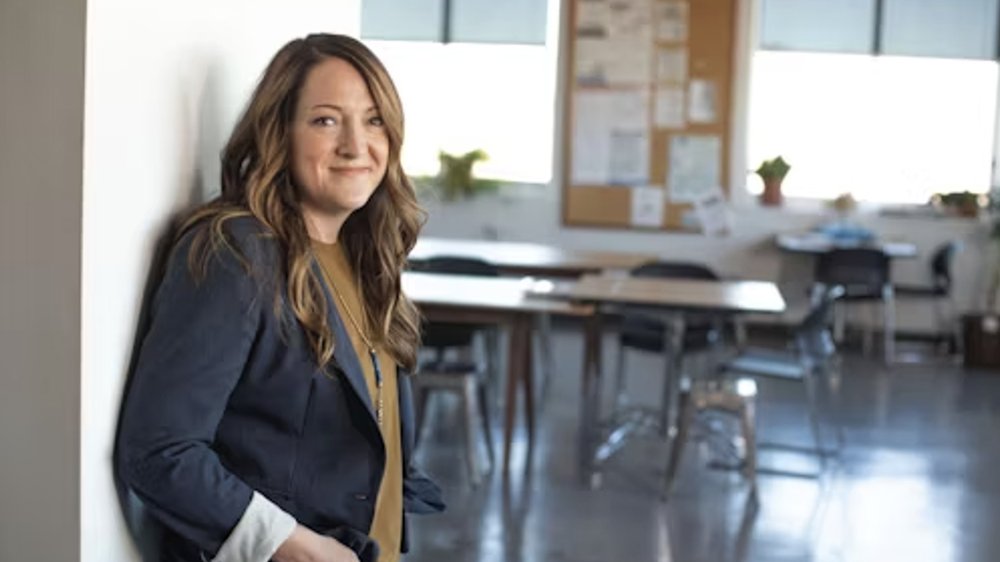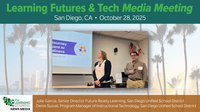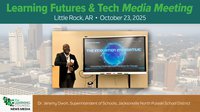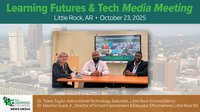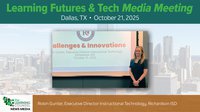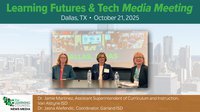I’ve spent my career working in and alongside special education teams, and I’ve never seen the need for paraeducator support as urgent as it is today. While districts around the country are facing special educator shortages, paraeducators are even harder to find. With new laws and regulations, more demands are being placed on them, yet only 17 states have competency standards for paraeducators. To provide clear expectations, consistent training, and a professional framework, I believe schools and districts must reimagine the role itself, starting with how to prepare and support the people behind it.
Establishing Professional Standards to Train and Retain Paraeducators
One way I show my respect for paraeducators is to call them “paraeducators.” They’re not aides or assistants; they’re educators. Paraeducators bring incredible dedication to their roles, but many enter the classroom with little to no background in education, much less special education or the evidence-based strategies required to support these students. Even so, newly hired paraeducators are expected to be skilled professionals from day one, and to play an essential role in delivering special education services, but if they don’t receive the foundational training needed to support students with disabilities, the results are often burnout, turnover, and frustration for everyone involved, including the students who rely on them. To stop the revolving door, I helped develop the LEARN Paraeducator Framework, which is grounded in decades of research and designed to professionalize the paraeducator role with clear standards, shared language, and consistent expectations.
What LEARN Means to Paraeducators
LEARN is an acronym that outlines five core competencies, all of which have specific applications for special education paraeducators:
● Lead and support instruction: The emphasis here is on “support.” Teachers are the ones driving the curriculum, while paraeducators help students connect with the curriculum. They might modify materials on the spot, implement behavior plans, or help a student build social skills over lunch.
● Ensure a safe and productive environment: Paraeducators actively ensure a safe, supportive learning environment by identifying hazards, following emergency procedures, and by engaging with students. They often need to use de-escalation practices and positive reinforcement strategies to support student behavior.
● Act professionally and ethically: Typically, paraeducators come from the community, so they're often familiar with the children and the families, and may also have other information about their students. They must understand and follow confidentiality laws in and out of the classroom.
● Recognize the whole child: Students with disabilities often require support in areas that are not traditionally covered by a course in school. This is where the paraeducator may come in to help students develop social skills, physical skills, communication skills, behavioral skills, and safety skills. Depending on the IEP, the most powerful lesson they teach a student might be how to have a conversation with a peer.
● Navigate the school setting as part of a team: As part of the educational team, paraeducators need to know how to communicate with their teammates and support each other. They need to know when to back off and when to step in.
Paraeducators certainly benefit from having clear expectations and guidance, but teachers and principals benefit, too. Instead of wondering what to expect from paraeducators, they now have a shared rubric to use while supporting the professional growth of the paraeducator, including assessing strengths and challenges and potentially working together in a mentorship to identify professional development needs and monitor paraeducator performance and progress.
Professionalizing Paraeducators
Clear expectations do more than help educators get started in their job; they help keep them in the classroom. According to a recent survey, 78 percent of paraeducators said they find their work deeply fulfilling—but nearly three-quarters also said they plan to leave within a year. Why? Because passion alone can’t sustain them in a job that typically comes with low pay, little or no pre-hire training, and a lack of clarity about what success looks like. That’s where standards like LEARN Paraeducator Framework matter. The adoption of a framework can inspire both paraeducators and other education professionals to recognize that being a paraeducator can be a career itself. When they can collaborate with teachers and administrators to assess their skills, receive job-specific professional development, and be a true part of the educational team, the paraeducator can find their place in the school and in their future. They receive the respect that they deserve and are able to offer stable, consistent support to students and schools.
Paraeducators are often the adults with whom a student with a disability spends the most time. They implement accommodations, build trust, and make learning accessible. Being a paraeducator can and should be a career. To give them the support they need, no paraeducator should walk into a school unsure of what’s expected of them, unsupported in their training, or unrecognized for their impact. National standards like the LEARN Paraeducator Framework and a commitment to treat paraeducators as the essential professionals they are can be the impetus needed to transform a historically fragmented, disrespected, and underpaid workforce into the indispensable member of the educational team that they truly are.
About the author
Dr. Kathleen Adolt-Silva is the special education content consultant for Kelly Education. She can be reached at Kathleen.Adolt-Silva@kellyeducation.com.

